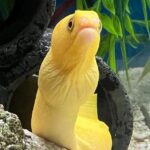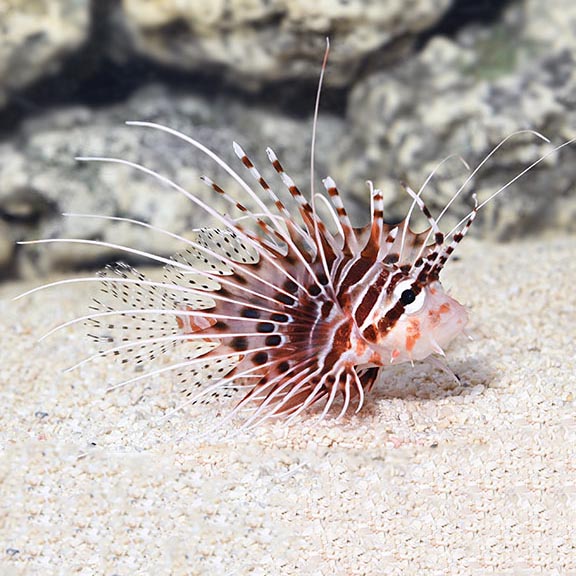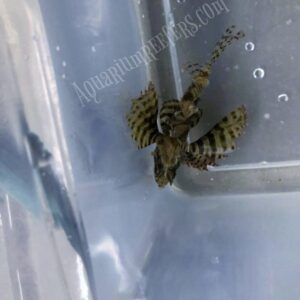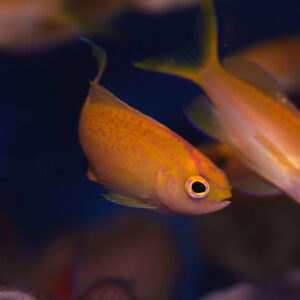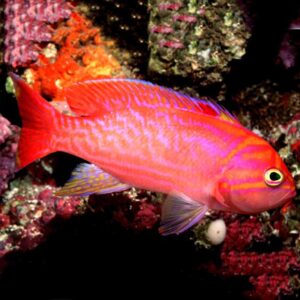Description
The Antennata Lionfish (Pterois antennata) is a stunning fish known for its intricate patterns and vibrant colouration. It can reach a maximum size of around 8 inches (20 centimetres).
Taxonomy
The Antennata Lionfish belongs to the genus Pterois and the family Scorpaenidae. It is closely related to other lionfish species such as the Red Lionfish (Pterois volitans). The genus name Pterois is derived from the Greek words “pteroeis” meaning “feathery” and “antennata” referring to its long, filamentous spines.
Natural Habitat
In the wild, the Antennata Lionfish inhabits coral reefs and rocky areas with crevices and caves. It can be found in the warm tropical waters of the Indo-Pacific region. These lionfish are known to seek shelter among the coral branches or in rock crevices, using their venomous spines for protection.
Keeping Antennata Lionfish Healthy:
The care level for Antennata Lionfish is moderate, and they require an experienced aquarist. They can be sensitive to changes in water conditions, so it is essential to maintain stable water parameters. A well-established aquarium with proper filtration and regular water changes is crucial for their health.
Special Requirements and Feeding
Antennata Lionfish are carnivorous predators that primarily feed on small fish and crustaceans in the wild. In captivity, they can be fed a diet of frozen or live meaty foods such as shrimp, squid, and fish. It is important to offer a varied diet to ensure they receive proper nutrition.
How Many Should I Keep?
Antennata Lionfish are best kept singly or in mated pairs due to their territorial nature. Keeping multiple Antennata Lionfish in the same tank can lead to aggression and potential harm to tank mates.
Hunting Method
The Antennata Lionfish is an ambush predator that uses its elaborate fin rays and camouflaged appearance to blend into its surroundings. It patiently waits for prey to come within striking distance before rapidly expanding its mouth and engulfing the prey.
Lighting Preference
Antennata Lionfish do not have specific lighting preferences. They are adaptable to various lighting conditions, but it is essential to provide adequate lighting to showcase their stunning colouration.
Suitable Tank Mates
When selecting tank mates for the Antennata Lionfish, it is important to choose species that are not small enough to be considered prey. Suitable tank mates can include larger, non-aggressive fish that can coexist peacefully with the lionfish.
Breeding Pterois antennata:
Breeding the Antennata Lionfish in captivity is a challenging and rare occurrence. Due to their territorial nature, it is crucial to set up a spacious and well-equipped aquarium to encourage successful breeding.
- Set up
To encourage breeding, provide a large aquarium with plenty of hiding spots and live rock for the lionfish to establish territories. Maintain stable water parameters with suitable filtration and regular water changes.
- Courtship/Spawning
During courtship, the male lionfish will display courtship behaviours, such as extending its fins and quivering movements. The male will approach the female, and if she is receptive, they will perform a synchronized swimming dance.
Spawning typically occurs during the evening hours. The female releases a cluster of eggs while the male simultaneously releases sperm to fertilize them. The eggs are buoyant and will float towards the surface, attaching to floating debris or floating plants.
- Rearing
After spawning, it is crucial to remove the eggs from the main aquarium to protect them from being consumed by the lionfish or other tank mates. Transfer the eggs to a separate rearing tank with appropriate water conditions and gentle water movement to simulate ocean currents.
The eggs will hatch within 36 to 48 hours, and the resulting larvae will require specialized feeding. Offer them small, live food such as rotifers and copepods initially, gradually transitioning to larger food items as they grow.
Sexual Dimorphism
Sexual dimorphism in the Antennata Lionfish is not well-documented, and distinguishing between males and females based on physical characteristics alone can be challenging.
Distribution
The Antennata Lionfish is naturally distributed throughout the Indo-Pacific region, including the Red Sea, the Maldives, Indonesia, and the Philippines. While captive-bred and line-bred strains of the Antennata Lionfish are available in the aquarium trade, the original wild fish come from the natural range of the species.
Summary
The Antennata Lionfish, or Pterois antennata, is a visually striking fish with venomous spines. Breeding them in captivity requires a well-prepared aquarium and careful monitoring of courtship behaviours and spawning. The eggs should be moved to a separate rearing tank for successful hatching and larval development. The sexual dimorphism of this species is not well-defined, and they are naturally distributed in the Indo-Pacific region. While delicate and requiring experienced care, the Antennata Lionfish adds a captivating presence to marine aquariums.
The Fish pictured here are representative only and the livestock you receive may vary in pattern, coloration, and shape.


